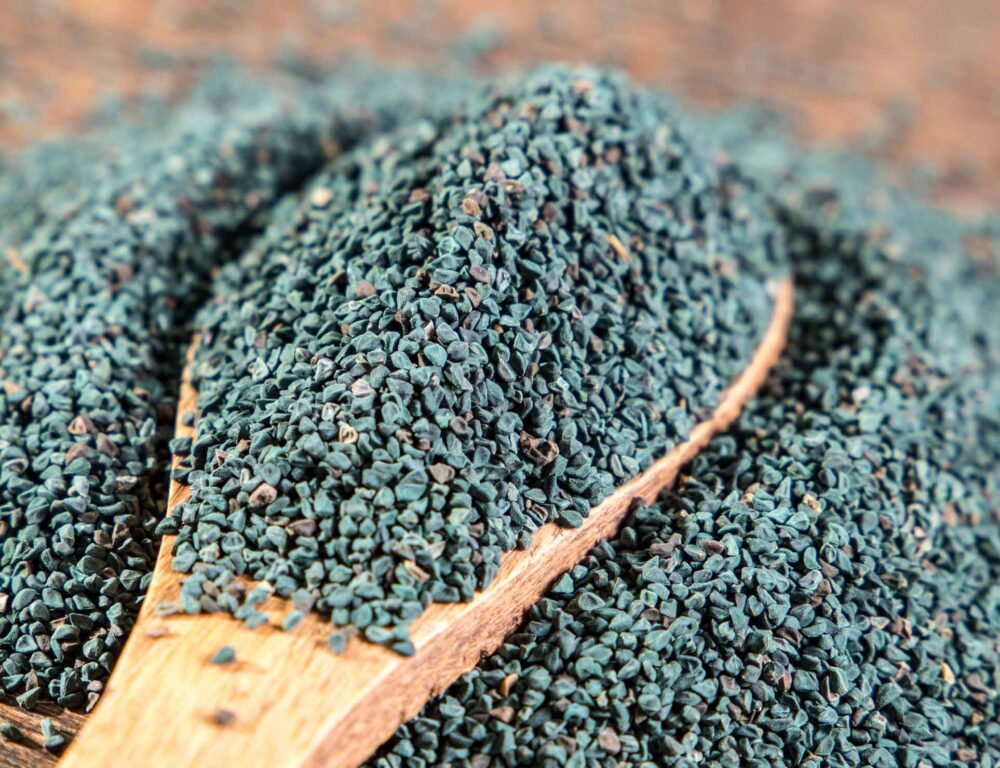At EIC for Export, we supply bulk Egyptian molokhia seeds to importers seeking consistency and quality. To begin with, our seeds grow in Egypt’s most fertile regions. Additionally, we monitor every stage of handling. Moreover, we test each batch to ensure high germination. As a result, the molokhia plant yields leaves used in fresh, dried, or frozen dishes. In addition, we follow strict quality procedures. Consequently, buyers receive complete documentation. Furthermore, we offer fast support. Ultimately, importers trust us as a Molokhia Seed Supplier in Egypt.
👉 Contact us now to request a quote or place your bulk order.
🟢 Why Choose Our Bulk Egyptian Molokhia Seeds?
Here’s why our Egyptian molokhia seeds are trusted by commercial growers and agricultural distributors:
🌿 High Germination & Vigor: Firstly, our molokhia seeds (Corchorus olitorius) are trusted to ensure purity and strong germination. Thus, we supply seeds suitable for both open-field and greenhouse cultivation, optimized for high yield and uniform leaf growth.
📦 Reliable Export Packaging: In fact, we clean, grade, and pack our seeds carefully in moisture-protected 25kg, PP bags. Additionally, our supply chain ensures consistent availability with on-time delivery and full documentation.
🌍 Global Demand: Lastly, Egyptian molokhia leaves are a staple in cuisines across Egypt, Lebanon, Jordan, and Gulf countries. Moreover, our seeds are used by processors of frozen molokhia, dried molokhia leaves, and minced molokhia products for retail and foodservice markets.
🧪 Specifications for Bulk Egyptian Molokhia Seeds
| Parameter | Specification |
| Product name | Egyptian Molokhia Seeds |
| Botanical name | Corchorus Olitorius (conventional) |
| Uses | Cultivation for fresh herb production or seed propagation |
| Common names | Molokhia, Mulukhiyah, Egyptian Spinach, Jute Mallow, Saluyot (Asia) |
| Verities | Egyptian Balady (most common) |
| Origin | Egypt |
| Packaging | 25kg bags |
| Sowing Time | March to June (Egypt & MENA) |
| Deal certificates | ISTA, invoice, Packing, COO, Phytosanitary, B/L. |
| Shipping | FOB/CIF any POD |
| POL | Any Egyptian POL |
| FCL | 20 MT |
| Purity | 99% |
| Germination rate | ≥ 85% (as per ISTA standards) |
| Moisture | 8% |
| Viability Period | Up to 12 months in cool, dry storage conditions |
| Ideal Temperature | 22°C to 28°C |
| Time to Germinate | 5–8 days under ideal conditions |
| Harvest Time | June to September (depending on sowing date and region) |
| Maturity Duration: | 45–60 days after sowing |
🌿 Main Applications of Bulk Egyptian Molokhia Seeds
Our Egyptian molokhia seeds are a wide range of industries; for example:
- 🌱 Agricultural Use: Our molokhia seeds are suitable for growing high-quality molokhia leaves for commercial harvest. So, Plants reach full leaf maturity in 45-60 days, ideal for fresh-cut, frozen processing, or air-dried applications.
- 🍲 Food Industry: Egyptian molokhia is used in chicken molokhia, molokhia rice, and molokhia stew, whether using fresh molokhia leaves, frozen chopped molokhia, or dried molokhia. Producers use the harvested leaves for vacuum-packed, frozen, or minced retail formats.
- 🏭 Industrial & Export: Our seeds support large-scale cultivation for producers of green molokhia, molokhia minced products, and many brands worldwide.
📦 Shipping & Documentation for Bulk Egyptian Molokhia Seeds
In Addition, Export Documentation is provided with Every Shipment, for example:
- Commercial Invoice
- Packing List
- ISTA
- Bill of Lading (B/L)
- Phytosanitary Certificate
- Certificate of Origin (COO)
- Fumigation Certificate
- Silica Gel Inclusion (for moisture protection)
- Full Insurance Policy
- Importer Security Filing (ISF file for USA)
🌍 Our Export Markets as a Molokhia Seed Supplier in Egypt
We export molokhia seeds to clients in the UAE, Jordan, Lebanon, Iraq, Kuwait, Qatar, Bahrain, Morocco, Tunisia, Libya, Sudan, Poland, Russia, the USA, Canada, Brazil, Argentina, Uruguay, Australia, Malaysia, South Korea, and Taiwan. Our buyers include large farms, seed distributors, frozen food manufacturers, and agro-industrial producers of minced molokhia and dried molokhia leaves..
Product Highlights: Bulk Molokhia Seeds
Moreover, we process our molokhia seeds to meet global standards, for example:
- ✅ Sourced from Egyptian farms with optimal growing conditions.
- ✅ Supports the production of fresh, frozen, or dried molokhia.
- ✅ Botanical identity: Corchorus olitorius (not to be confused with spinach).
- ✅ HS Code: 12/09/91/00/00
🤝 Why Work with EIC – Your Molokhia Seed Supplier
✅ A lot of years of export experience.
✅ Direct farm sourcing with full traceability.
✅ Competitive molokhia seed price per MT.
✅ Custom labeling, seed testing, and packaging options.
✅ Lastly, responsive support and rapid delivery.
Order Bulk Egyptian Molokhia Seeds Today
📦 Minimum Order: 10 MT (flexible for regular buyers)
📅 Lead Time: 12–14 days after order confirmation
🎯 Special Offer: Free fumigation, additionally insurance for orders over 20 MT.
📧 Contact us now to request a quote or place your bulk order: by Website form
🌐 www.herbseic.com
🔗 WhatsApp Now for fast contact
📍 Based in Fayoum, Egypt.
👉 Fast response within 24 hours guaranteed.
🎥 Visit our YouTube Channel for molokhia farming & seed processing videos.


Reviews
There are no reviews yet.